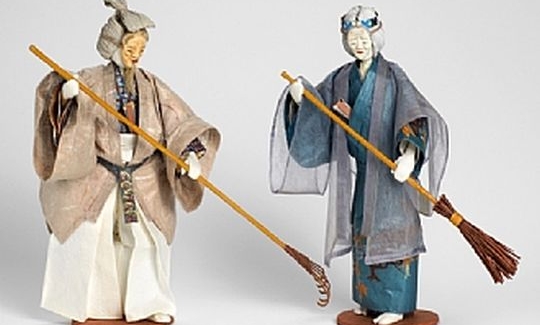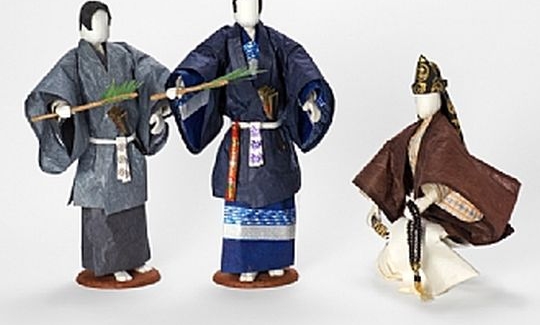At the age of twelve, while rummaging through her father's library, Ruth Falk found a booklet containing Japanese poems of 17
syllables - haiku - in a German translation. She was amazed at how much can be said in only a few words, and her curiosity was aroused. Ruth started to collect books, and visited exhibitions and museums, until one day she discovered a special book, a travel diary by Matsuo Basho (1644-1694) The Narrow Road to Oku (Oku no hoso michi, 1689). She felt that she had found what she was searching for; a poetic description of a journey, tracing long-used paths of famous poets, interspersed with haiku. Ruth started seriously learning about Japan. She also tried to learn the language. After her retirement, she set out on a journey around the world. Her first and main destination was Japan. She took a tiny room in a rundown hostel in Kyoto, the ancient capital for 1200 years. From there she followed in the footsteps of Basho, with his diary in English and Japanese as her guide. People, though somewhat puzzled by this strange "grandma", were always helpful and kind. At one of the stations she met the man who was later to be her Zen Master, to whom she is deeply indebted and thankful. In this manner, Ruth saw the Japan that is off the beaten track, mostly in rural surroundings. In Kyoto, on Saturday mornings, Ruth went to Noh Theatre performances, and was mesmerized by them. She felt "an essence of the Japanese soul, a combination of history, sagas, and poetry, interwoven with an ancient text, performed in an abstract, minimalist style totally unknown to western theatres".
In Japan, dolls are cherished objets d'art, not just toys. They are collected and exhibited in homes and museums. There is even a doll festival on March 3rd every year. Dolls can be made of ceramic, dressed in fine brocades, or made of Japanese paper (washi). There are books on how to make them, and even courses on TV. After Ruth's third visit to Japan, she had collected enough paper of all sorts, and had learned sufficiently about Japanese art and history. She started creating Noh figures out of paper.
A standing figure is about 26 centimeters high. First, florist's wire is used to create a maquette of the required size and pose. Cardboard tubes are then used to build arms, legs, and body. Head, hands and feet are shaped with cotton wool, pasted over with strips of special white paper. The costumes correspond closely to the Japanese kimono and all its layers. Ruth only uses monochrome paper, on which she draws and paints her own patterns and designs. Wigs are made of self-made crepe paper, masks are modelled in papier-mâché, and hemp is used for beards. Only modern hair styles are made from readymade materials. The props too are made of paper. It takes much research, from reading the story to deciding the correct season of the year, before setting out to create a figure. "One has to become the character in order to be able to reproduce him or her" she says, hoping that she has succeeded.
Three figures displayed in the exhibition are not connected to Noh. They are: the poet Basho and his companion Sora on their journey, and the poetess Ono no Komachi as a young court lady, but her Noh character asked for this aspect of her appearance, as did Ruth's love for her poetry.





